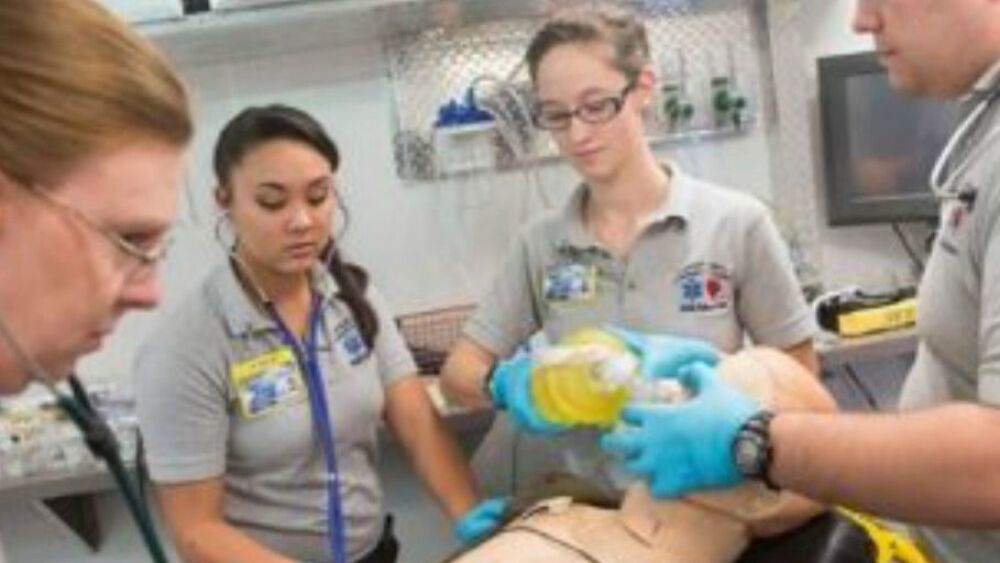This article was originally posted at Limmer Education and is reprinted with permission.
By Dan Limmer
I believe two things are foundational for any level of EMS provider: pathophysiology and differential diagnosis. Understanding basic ventilation and perfusion principles is vital. In a patient, once you use pathophysiology and determine whether the patient is sick or not, then it is time to perform a differential diagnosis.
For years, we were told that EMS didn’t or couldn’t diagnose. We’ve overcome that. To be fair, we don’t have many of the diagnostic tools present in the hospital … at least not yet. But we do have an ever-growing toolbox for assessment (think future: ultrasound and lab tests) – and a brain. For us to choose an appropriate treatment, we must suspect a condition and apply a protocol.
So how do we teach this?
I’ve developed a series of in-class dynamic learning exercises to help teach differential diagnosis. You can download them here and refer to them as you finish reading. They use chest pain and discomfort as the vehicle to employ differential diagnostic thinking.
Exercise 1 – Basics of Differential Diagnosis
Part 1 – Criticality and frequency
How do we help differentiate the horses from the zebras of diagnosis? This exercise takes 10 possible causes of chest pain and discomfort and asks the student to rate each one in two categories: criticality and frequency. Angina is pretty common and can be serious. Ascending aortic aneurysms are pretty rare (6-10 per 100,000 people), but when they are present, watch out! The exercise is simple but valuable for gaining perspective.
Part 2 – Assessment techniques
How do we assess for each of the conditions? Is this done early or late in the assessment process? This part builds on part one but adds more of the functional process of assessment.
Exercise 2 – Differential Diagnostic Practice
Students are given six brief but realistic scenarios that require differential diagnostic thinking. There is a seventh opportunity for students to create a scenario and use higher-level cognitive thinking.
Students are asked for three types of information:
- History. What can you obtain from the patient’s history to help you come to a diagnosis? I envision these things like medications, risk factors (usually underappreciated in EMS), past medical history, etc.
- Direct questions. Remember the value of these findings – and point out how they are important in the medical patient when a hands-on approach is less beneficial than in trauma. Your students should ask specifically about increased dyspnea on exertion, orthopnea, syncope or near-syncope, palpitations, weight gain, pleuritic pain and more. These are part of a thorough cardiac and respiratory body system exam.
- Physical assessment. Everyone tends to think of vital signs and usually lung sounds. But are we thorough enough looking for JVD, pedal or sacral edema, performing palpation of the chest, and other valuable physical assessment methods?
These lists aren’t designed to be all-inclusive, but you get the point.
Bringing Differential Diagnosis Home
With any exercises, remember the basic rules:
- You must facilitate the activity to get the full benefit.
- If you don’t go over it and show you value the exercise, students won’t take it seriously.
I usually break the students into groups to complete the exercises. Each group assigns a presenter to explain the group’s findings. Each activity has questions at the bottom of the page. Here are some additional questions to help you facilitate:
- Why do you think different groups assigned different levels or frequency and criticality to different conditions? Is this OK?
- Different groups chose different assessments for the same condition.
- In scenario one in the second exercise, a patient believes his shoulder pain is from exercise while his wife is concerned about an MI. Can we reliably diagnose between the two? How does your assessment fit into a patient refusal?
- What is a “pertinent negative?” Why is this concept important?
- Ask students if they believe they were able to get enough information to make a diagnosis. How close are they to choosing a treatment and/or doing a hand-off report at the hospital?
I believe that these exercises can be used with students at any level. If you are teaching EMTs, focus on how body system assessments play into differential diagnosis. With advanced courses, go deeper into the thinking and differential diagnostics with the additional tools they have available.
I hope you enjoy these exercises. Over the past few semesters, my students have used these successfully to improve assessment, priorities, thinking, and diagnosis. I hope you use them with your students. Let me know how it goes!
Read next:
EMT 360: The importance of context in EMS education
Anatomy and pathophysiology frame what ET students will experience in the clinical setting















